One of the key features of the so called "in-well hydrolysis" is that it can be a time saver for high throughput labs, which makes it look very appealing. In this blog post, I will be discussing some of the advantages of using an in-well hydrolysis plate and some of the results that I’ve gotten when compared to an out-of-well hydrolysis plate.
What in-well hydrolysis means?
In-well hydrolysis means hydrolyzing urine samples in the well of the extraction plate instead of outside of the extraction plate. Urine hydrolysis is a part of sample preparation that we do to eliminate glucuronides that attach to drugs to make them more water-soluble.
Several sample preparation companies make in-well hydrolysis plates. Biotage also launched their EVOLUTE HYDRO CX and ABN in-well hydrolysis plates. These plates are advertised to save a lab time and reduce potential cross-contamination, all while not affecting recoveries and matrix effects. But is that really the case?
I have been running a Drugs of Abuse (DOA) panel containing about 100 analytes. I compared the EVOLUTE EXPRESS CX 30 mg plate to the EVOLUTE HYDRO CX 30 mg plate. When running the EVOLUTE EXPRESS CX method, I hydrolyze my samples outside of the plate. After the completion of hydrolysis, I pretreat my samples and then transfer them to the EXPRESS CX plate. When using the EXPRESS CX plate, I don’t have to condition or equilibrate my sorbent prior to use, which already saves me some time.
Do you want to know more about sample preparation techniques?
When running the EVOLUTE HYDRO CX method, I hydrolyze my samples in the plate. A frit in the plate holds the sample above the CX sorbent that allows for the in-well hydrolysis. After hydrolysis, I simply add the pretreatment to the wells of the HYDRO CX plate and continue with my extraction! With the HYDRO plates, the column conditioning and equilibration steps are eliminated because the sample is already in the plate.
So how does the HYDRO method save me time? I don’t have to transfer my samples to the plate after hydrolysis! This also reduces my risk of carryover or cross contamination between samples. I also don’t even have the option of doing conditioning and equilibrating steps. But, do I actually get the same results for both products? YES! As you can see below, I compared both hydrolysis efficiencies for out-of-well vs in-well plates. I also compared recoveries and matrix effects. All hydrolysis efficiencies, matrix effects, and recoveries were within 20% for the 2 different plates.
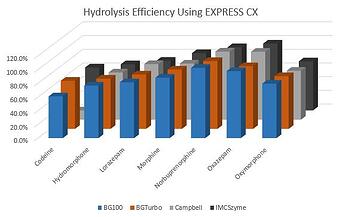

The hydrolysis for both the EXPRESS CX and HYDRO CX methods was done using an incubation of 55C for 30 minutes.
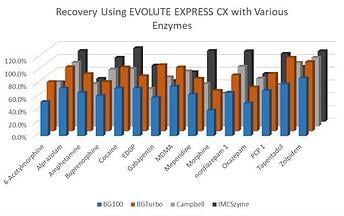
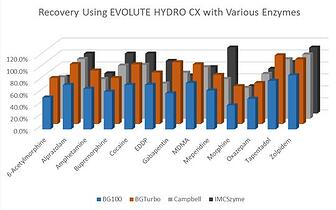
Recoveries vary depending on the enzyme. However, they are consistent between the 2 plates.
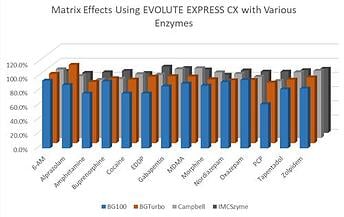
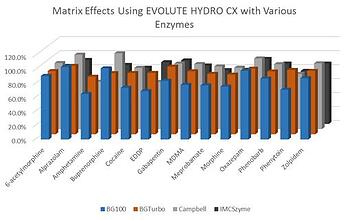
As can be seen above, hydrolysis efficiencies, recoveries, and matrix effects are nearly identical for both the in-well hydrolysis plate and the out-of-well hydrolysis plate. For my future urine panels that require hydrolysis, I think I will be using the EVOLUTE HYDRO CX plates to save me a bit of time and to eliminate some cross-contamination risk.
Biotage published more information about the methods and comparisons between the two plates in a poster presented at ASMS 2017.
To read more about how the HYDRO plates work, please read Biotage EVOLUTE HYDRO CX application note.

